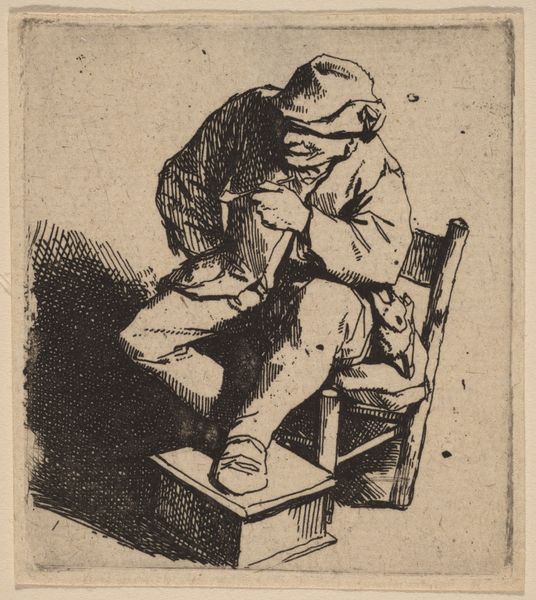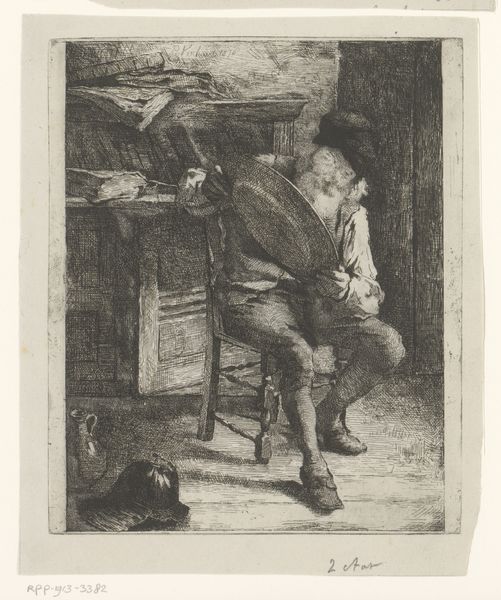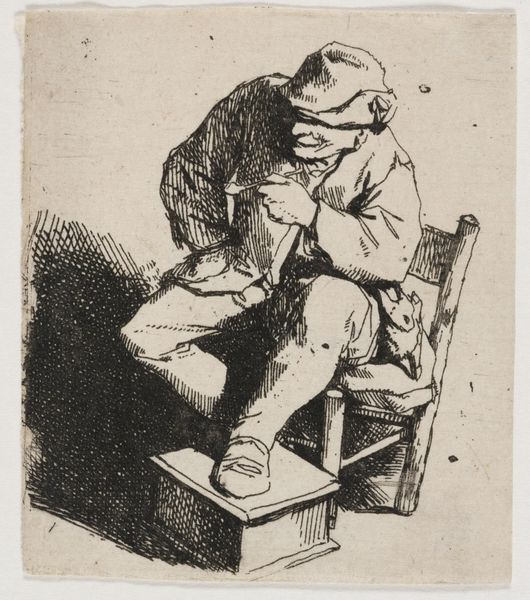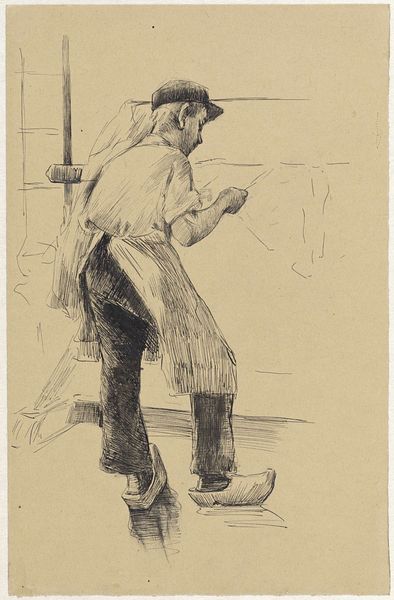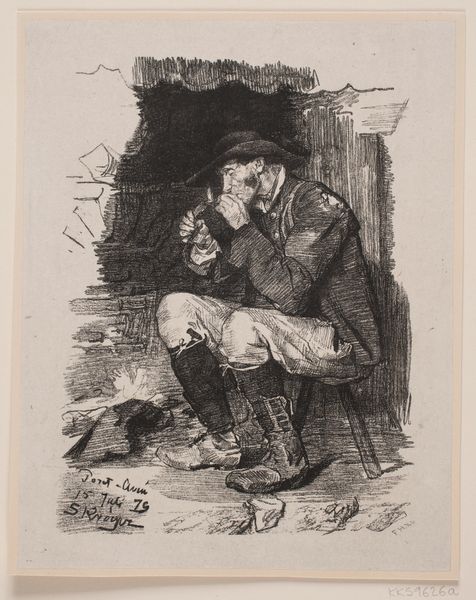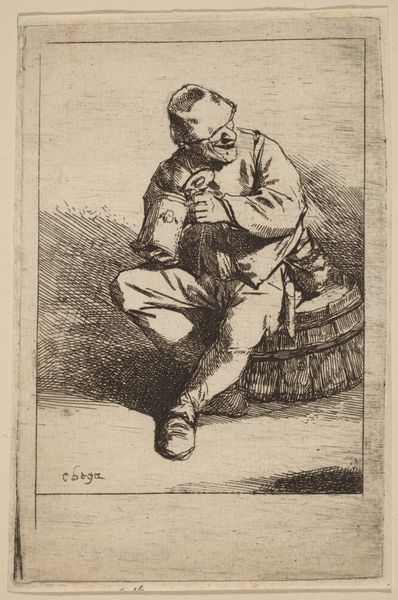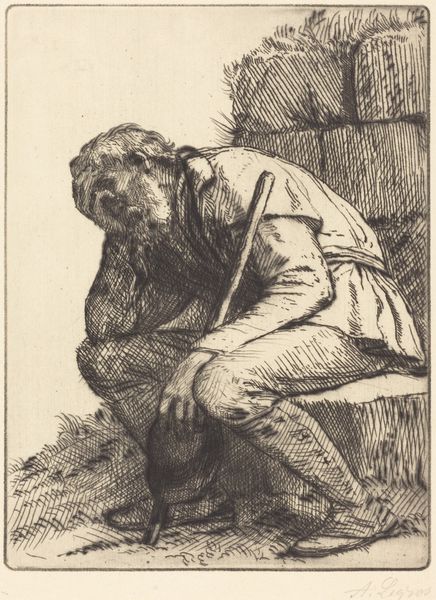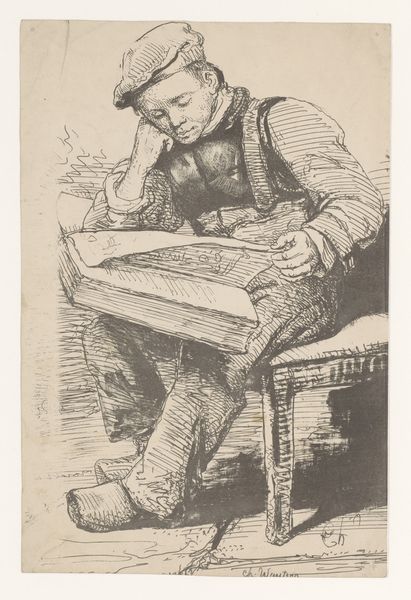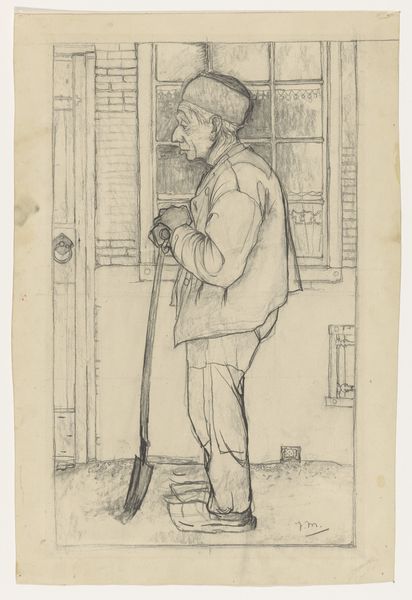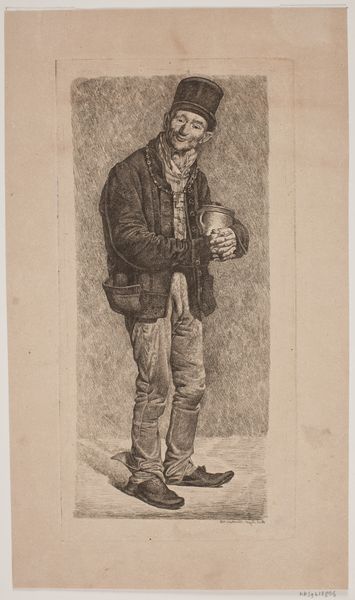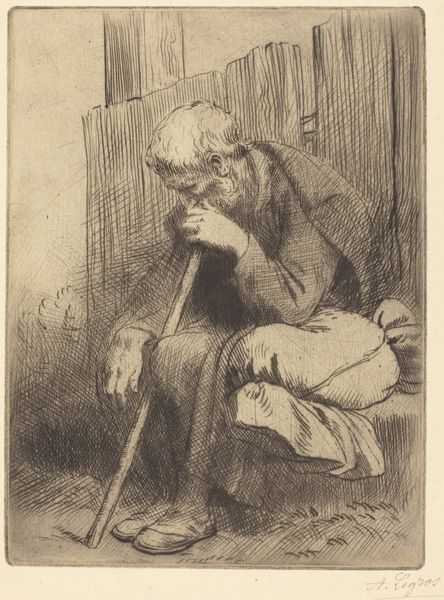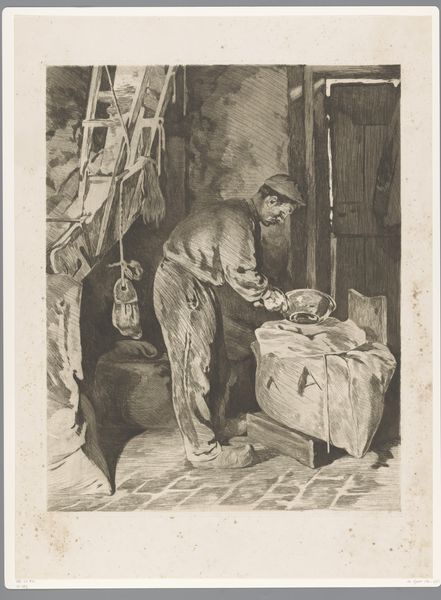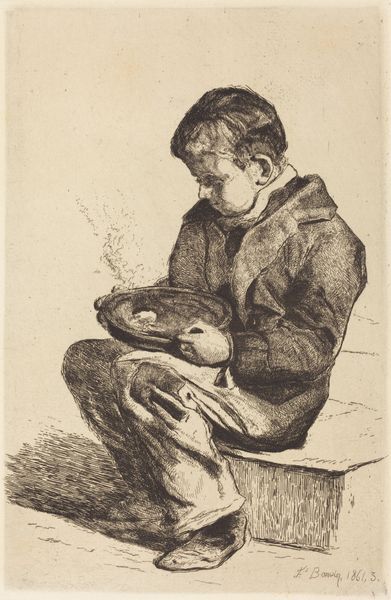
drawing, print
#
portrait
#
drawing
# print
#
landscape
#
figuration
#
portrait drawing
#
post-impressionism
#
realism
#
monochrome
Dimensions: Sheet: 23 1/16 × 15 3/8 in. (58.6 × 39 cm)
Copyright: Public Domain
Editor: Here we have Van Gogh's "At Eternity's Gate," created in 1882. It’s a monochrome print or drawing of a man sitting on a chair, head in his hands. It feels very raw and immediate to me. What draws your eye when you look at this work? Curator: Immediately, the intense focus on the figure's posture and dress. We see the physical manifestation of grief rendered in the simple act of production: a man, a chair, paper, ink. It brings up the social conditions that might lead an artist like Van Gogh to focus on such a subject and, perhaps, his own state of being. What was the process of making such a drawing for him at that point in time? Editor: That’s interesting. So you’re focusing on the…labor, essentially, that went into this image. Curator: Exactly. We should look into the materiality of the work itself – what kind of paper, the nature of the ink. Was this a quick sketch made for practice, a drawing destined to be reworked into a painting, or a finished work to be sold? All this is crucial. What purpose would it have served for Van Gogh at that specific juncture of his life and career? The tools he used and how accessible and precious were they. What statements was he making through the subject in relation to what he had available? Editor: I hadn’t considered that before. It makes me wonder about the sitter, too. What can we tell about this man’s social standing from his clothing, and his posture? Curator: Indeed. The worn clothing and the palpable despair hint at the sitter's socio-economic condition, reflecting a critical engagement with social realism prevalent during that era, an insight into the culture of work at the time. Do we know who posed for it? That information matters greatly, influencing its narrative. Editor: I see what you mean. Thinking about it this way definitely sheds light on it beyond just the surface level. It shows how the making is closely tied to what he wants to show us. Curator: Precisely. It really helps us challenge the notion that this is merely an image of sadness, as you said initially.
Comments
No comments
Be the first to comment and join the conversation on the ultimate creative platform.
